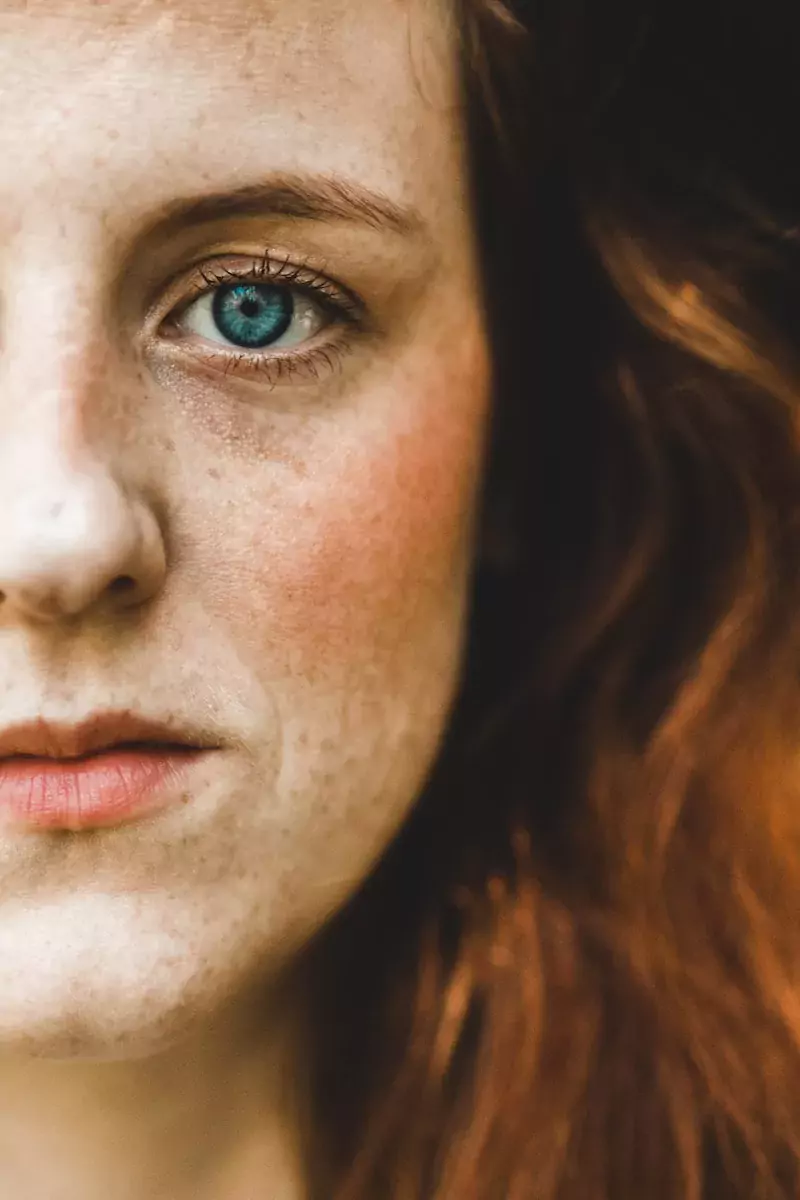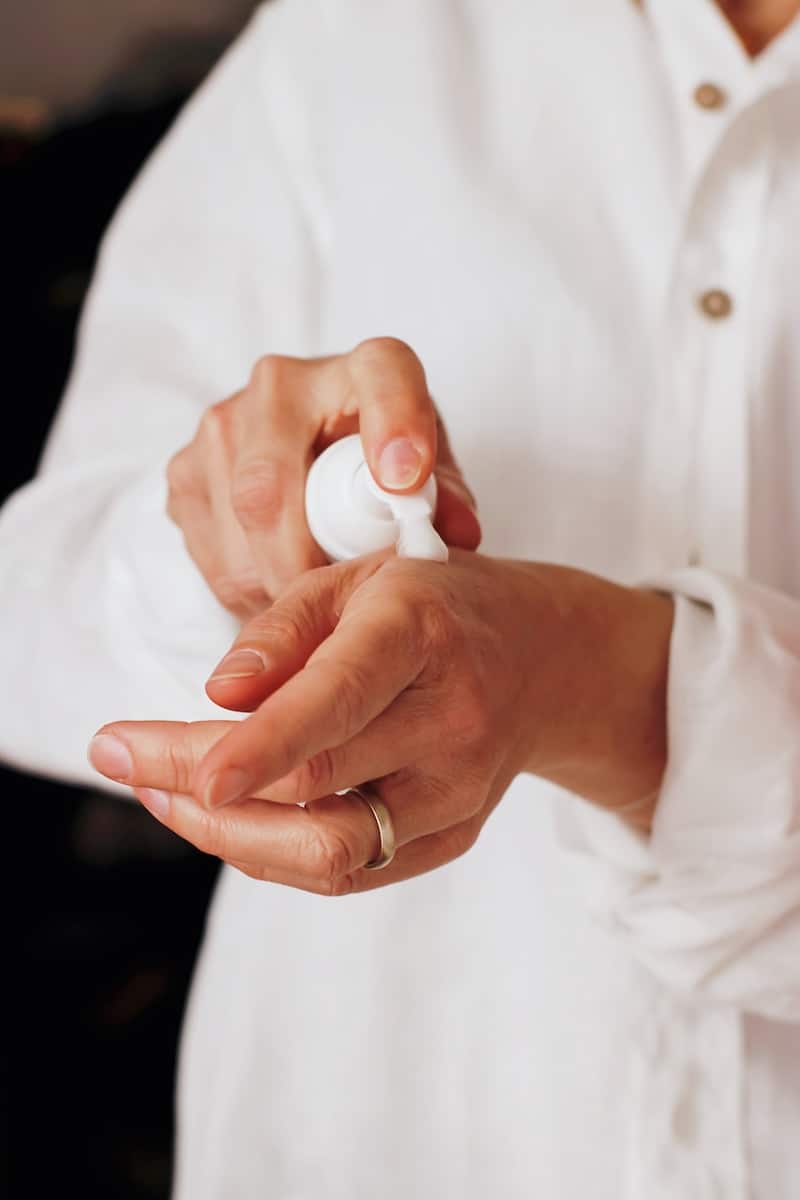weight loss stretch marks vs weight gain stretch marks
Weight loss stretch marks vs weight gain stretch marks, what's the difference? Does it even matter? I mean stretch marks ARE stretch marks, right?

Table of Contents
Stretch marks are a common concern that many individuals experience throughout their lives. Whether it's due to weight gain, weight loss, pregnancy, or growth spurts, these indented streaks or lines on the skin can be a visible reminder of the body's changes. In this article, we will explore the causes of stretch marks, treatment options, and preventive measures to maintain healthy skin.
What Are Stretch Marks?
Stretch marks, also known as striae distensae or striae atrophicus, appear as narrow streaks or lines on the skin. They can occur in various parts of the body, including the arms, hips, thighs, chest, stomach, breasts, and buttocks. These marks often appear as discolored stripes, ranging from white, red, and blue, to narrow pink or purplish shades. The appearance of stretch marks can vary from person to person, but they typically stand out due to their texture and contrast with normal skin.
Stretch marks are primarily caused by the stretching and tearing of the skin's collagen and connective tissues. When the skin undergoes rapid growth or weight change, such as during puberty, pregnancy, or significant weight gain, the elastic fibers in the skin become damaged, resulting in the formation of stretch marks. Hormonal changes, including increased levels of estrogen, androgen, and corticoid receptors, can also contribute to the development of stretch marks.
Factors Contributing to weight loss stretch marks vs weight gain stretch marks
Weight Gain and Loss
Contrary to popular belief, stretch marks are not solely caused by weight gain. While weight gain can contribute to their formation, stretch marks often occur during the initial period of weight gain when the skin is subjected to stretching and tearing. The rapid stretching of the skin leads to damage in the collagen and elastin fibers, resulting in the appearance of stretch marks. Rapid weight loss can also cause stretch marks to become more noticeable, as the skin becomes looser and has more surface area.
Pregnancy and Hormonal Changes

Pregnancy is a significant factor contributing to the development of stretch marks in women. The hormonal changes that occur during pregnancy, such as increased levels of estrogen and softening of the skin fibers, make pregnant women more prone to stretch marks. As the baby grows, the skin stretches in the abdominal region, leading to the formation of stretch marks. Hormonal fluctuations during puberty and hormonal disorders like Cushing's syndrome can also increase the likelihood of stretch marks.
Growth Spurts and Muscle Growth
During periods of rapid growth, such as adolescence and growth spurts, the body undergoes significant changes. The skin stretches to accommodate the growing body, and if the stretching occurs rapidly, it can result in the formation of stretch marks. Similarly, individuals who engage in intense muscle-building activities, such as bodybuilding, may experience stretch marks due to the rapid expansion of muscles and stretching of the skin.
Genetic Factors and Skin Elasticity
Genetics plays a role in determining an individual's susceptibility to stretch marks. Some people may have a higher predisposition to developing stretch marks based on their genetic makeup. Additionally, the overall elasticity of the skin can influence the likelihood of stretch marks. Skin with poor elasticity is more prone to tearing and scarring, making it more susceptible to stretch marks.
Treatment Options for Stretch Marks
While stretch marks cannot be completely eradicated, there are various treatment options available to minimize their appearance and improve the overall texture of the skin. It's important to note that the effectiveness of these treatments can vary depending on individual factors, such as the age and severity of the stretch marks. Here are some common treatment options:
Topical Creams and Oils

Topical creams and oils can be used to moisturize the skin, promote collagen production, and improve its elasticity. Creams containing ingredients like hyaluronic acid, vitamin E, and cocoa butter are often recommended for reducing the appearance of stretch marks. These products can be applied directly to the affected areas and massaged in a circular motion to enhance absorption.
Laser Treatments
Laser treatments, such as fractional laser therapy, can stimulate collagen production and improve the appearance of stretch marks. The laser targets the affected areas, triggering the body's natural healing response and promoting the growth of new, healthy skin cells. Multiple sessions may be required to achieve optimal results, and it's essential to consult with a dermatologist or medical professional before undergoing laser treatment.
Microneedling
Microneedling is a procedure that involves the use of a device with tiny needles to create controlled micro-injuries on the skin's surface. These micro-injuries stimulate collagen production and promote skin rejuvenation. When performed by a trained professional, microneedling can help reduce the appearance of stretch marks and improve overall skin texture.
Chemical Peels
Chemical peels involve the application of a chemical solution to the skin, which exfoliates the top layer and promotes the growth of new skin cells. This process can help reduce the appearance of stretch marks by smoothing out the skin's texture and promoting collagen production. It's important to consult with a dermatologist or skincare professional to determine the appropriate strength and type of chemical peel for your specific needs.
Surgical Procedures
In severe cases where stretch marks are extensive or deeply indented, surgical procedures such as abdominoplasty (tummy tuck) or laser-assisted liposuction may be considered. These procedures aim to remove excess skin and tighten the remaining skin, resulting in a smoother appearance. It's crucial to consult with a qualified plastic surgeon to discuss the risks, benefits, and suitability of surgical options for stretch mark treatment.
Preventive Measures for Stretch Marks
While it may not be possible to prevent stretch marks entirely, there are steps you can take to minimize their occurrence or reduce their severity. Here are some preventive measures to consider:
Maintain a Balanced Diet

Eating a nutritious, balanced diet can contribute to overall skin health and elasticity. Include foods rich in vitamins A, C, and E, as well as zinc and proteins, to support collagen production and promote healthy skin. Stay hydrated by drinking plenty of spring water, as adequate hydration helps maintain skin elasticity.
There are many “diets” but the truth is to eat an assortment of fruits and veggies daily. Add in some type of protein, either meat or vegetarian options, and nuts, seeds, and spices. Avoid processed foods at all costs. It's really that simple. No need for crash diets or low-carb, high-carb, juice cleanses, etc. Sticking with it is the key. I can help you create life-long changes that will stick. Let's chat about how I can help you lose weight for good!
Keep the Skin Hydrated
Regularly moisturizing the skin can help improve its elasticity and reduce the likelihood of stretch marks. Choose moisturizers or oils specifically formulated for stretch mark prevention and apply them to areas prone to stretching, such as the abdomen, thighs, and breasts. Massaging the skin while applying the moisturizer can also improve blood circulation and promote better absorption.
Gradual Weight Changes
If you are planning to gain or lose weight, consider doing so gradually to give your skin time to adjust. Rapid weight gain or loss can put significant stress on the skin, increasing the likelihood of stretch marks. Aim for a steady and sustainable approach to weight management.
Exercise Regularly

Regular exercise can help maintain skin elasticity and improve overall skin health. Engage in activities that promote muscle tone and strengthen the underlying structures of the skin. This can help support the skin during periods of growth or weight change.
Avoid Excess Skin Stretching
Avoid prolonged or excessive stretching of the skin, especially in areas prone to stretch marks. This includes being mindful of rapid weight gain, wearing tight clothing that restricts movement, and participating in activities that put excessive strain on the skin.
Prevent & Treat
Stretch marks are a natural part of life and can occur due to various factors such as weight gain, weight loss, pregnancy, growth spurts, or muscle growth. While they cannot be totally eliminated, there are treatment options available to minimize their appearance and improve skin texture.
Taking preventive measures such as maintaining a balanced diet, keeping the skin hydrated, and avoiding rapid or excessive skin stretching can help reduce the likelihood of stretch marks. Embrace your body's changes and remember that stretch marks are a testament to the journeys and transformations we go through in life.

🌟 Unlock Your Potential with Personalized Life Coaching

Ready to embark on a journey to a happier you? 🌼
👉 Are you looking to renew your sense of purpose in life?
👉 Seeking guidance for what you should do next in life?
👉 Eager to boost your energy levels to be an energic match for the universe?
👉 Want to manage stress and find your inner peace?
Look no further! My Life Coaching is your roadmap to a vibrant life. 🌈
🔥 WHY CHOOSE ME?
✅ Personalized Coaching: Tailored to YOUR unique goals and needs.
✅ Sustainable Results: Say goodbye to rehashing the past and start planning your future.
✅ Expert Guidance: I'm with you every step of the way.
✅ Transformative Mindset: Learn how to conquer obstacles and stay motivated.
✅ Proven Success: Join countless others who've achieved their dreams.
Don't wait any longer! Take the first step towards a healthier, happier life. 🌟
Let's chat about how we can kickstart your journey to the more fulfilling life that you wake up excited about every day.

This website is reader-supported. When you make a purchase we may be compensated, at no additional cost to you. Thank you for supporting our mission to help women.
Sharing is caring! If you found this article helpful, don't keep it to yourself. Share it with your friends and family and spread the word.
And if you're looking for a supportive community of women who understand the challenges of life after 40, join the Flourish After 40 Facebook group. Here, you'll find a safe space to share your experiences, ask for advice, and connect with like-minded individuals who are dedicated to achieving their life goals. Together, we can flourish after 40!






